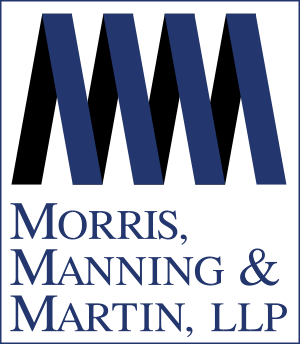In boardrooms and executive suites, conversations about artificial intelligence have shifted dramatically. Where once the questions were narrowly technical – about algorithms, data sets, and vendors – today they are broader, more human, and more consequential.
The integration of AI has become less about technology and more about stewardship. It is no longer just an IT initiative; it is a leadership responsibility.
Leaders are asking: What does AI mean for our organization, our people, and our reputation?
Across industries – whether in finance, healthcare, manufacturing, or education – the challenges surrounding AI ethics, compliance, and governance tend to follow a common pattern. The specifics may vary, but the underlying issues are strikingly similar.
From years of working with leadership teams navigating this terrain, I have seen several best practices and lessons learned stand out, offering a compass for organizations determined to pursue innovation responsibly.
Ethics: Embedding Foresight Into Design
When ethics is treated as an afterthought, organizations are forced into damage control – explaining missteps to regulators, the public, and their own employees. But when ethics is built into design from the start, it becomes a compass that guides decisions long before a product is launched. Embedding foresight means asking not only can we build this system, but should we – and if so, how should we?
Consider the design phase of an AI system. It is here that the seeds of trust or mistrust are planted. Foresight begins with deliberately widening the lens. Instead of a narrow focus on functionality and performance, leaders must encourage teams to ask harder questions: Who might be unintentionally harmed? What blind spots exist in the data? Which trade-offs are being made, and have they been acknowledged openly? When those questions are asked early, organizations avoid costly corrections later.
Foresight also means ensuring diverse voices are at the table. Homogenous teams tend to miss risks that are obvious to those with different experiences.
By including a range of perspectives – technical, legal, operational, and even those of affected communities – organizations surface concerns that might otherwise remain hidden. This is not a matter of slowing innovation; it is a way of ensuring that innovation stands the test of scrutiny and time.
Equally important is building mechanisms of accountability into the design itself. Who is responsible for monitoring ethical risks? How will issues be escalated and addressed? Clear ownership prevents ethical concerns from falling into organizational gaps. Transparency must also be woven into the user experience – explaining, in plain language, how recommendations are made and what options people have if they disagree. Such clarity reinforces fairness and strengthens trust.
Embedding foresight does not mean predicting every possible harm. It means putting in place structures and habits that surface the right questions at the right time. It is about making ethics a design input, not a public-relations exercise after deployment. Leaders who embrace this approach are better positioned to say, with credibility, that their AI systems are not only effective but also aligned with the values of the organization and the communities they serve.
Compliance: A Journey, Not a Destination
Compliance in AI is often misunderstood as a checklist – something to be ticked off once and then filed away. But in reality, compliance is less like crossing a finish line and more like maintaining a steady course through shifting winds. Laws and regulations are changing rapidly: the EU AI Act is redefining high-risk applications, U.S. states are enacting divergent privacy and AI laws, and industry-specific regulators are issuing new guidance. The question is not whether organizations can comply today, but whether they can adapt tomorrow.
Forward-looking leaders treat compliance as a living process.
They establish structures for horizon scanning, ensuring that someone in the organization is always watching for legal developments and assessing their relevance. They do not wait until a law comes into force to act. Instead, they adapt policies, update training, and redesign processes in anticipation of regulatory change. This mindset turns compliance from a reactive burden into a proactive advantage.
True compliance also extends beyond the letter of the law. It involves aligning with the spirit of regulation – demonstrating to stakeholders that the organization understands not just what is required, but why. When companies build compliance into their culture, they create resilience. Employees know their responsibilities, regulators view the organization as a trusted partner, and customers feel more secure engaging with AI-enabled services. In a world where trust is fragile, such reputational capital is invaluable.
Governance: The Framework That Builds Trust
If ethics is the compass and compliance is the journey, governance is the map that shows where responsibility lies. Governance provides the scaffolding that allows AI innovation to flourish without collapsing under the weight of uncertainty. Without it, organizations risk fragmentation: different teams deploying models without coordination, decisions being made without oversight, and risks slipping through unnoticed.
Strong governance begins with clarity of ownership. Every AI system should have a named owner accountable for its performance, its risks, and its outcomes.
Approval processes should be transparent, with cross-functional committees – drawing from legal, compliance, IT, risk management, and business units – reviewing proposals and making informed decisions. These committees are not meant to slow innovation, but to ensure it moves forward responsibly, with the right checks in place.
Governance also requires ongoing monitoring. AI systems are dynamic; they evolve as data shifts and environments change. Continuous oversight ensures that what was safe and effective yesterday remains so tomorrow. Dashboards, audit logs, and escalation procedures provide visibility and accountability. Without these, even well-designed systems can drift into harmful territory.
Most importantly, governance builds trust. Employees trust that their leaders are taking responsible steps. Customers trust that their data is being handled carefully. Regulators trust that the organization is not cutting corners. And boards trust that management is balancing innovation with oversight. In a marketplace where your organization’s reputation can be lost in an instant, governance is not bureaucracy – it is insurance, resilience, and credibility.
The Leadership Imperative
At the heart of AI governance lies a truth that leaders cannot ignore: the hardest questions AI raises are not about data or code, but about people. The choices leaders make – when to accelerate, when to pause, when to say no – carry consequences that extend far beyond the enterprise. They shape how employees view their organization, how customers experience its services, and how regulators assess its credibility.
The leadership imperative is therefore not about mastering every technical detail. It is about cultivating the judgment and courage to navigate ambiguity.
Leaders must be willing to step into uncomfortable territory, asking: Are we trading short-term efficiency for long-term trust? Have we invited enough perspectives into this conversation? What will this decision look like when scrutinized five years from now? These questions, though difficult, keep organizations grounded.
Leadership in this era also requires humility. AI tempts organizations to move fast and break things, but leaders must resist the allure of unchecked speed. They must recognize that no model is perfect, no dataset complete, and no safeguard infallible. Humility fosters a willingness to course-correct, to admit when systems fall short, and to rebuild with stronger guardrails.
Equally, leadership calls for resoluteness – to invest in safeguards when budgets are tight, to slow deployment when risks are unresolved, and to explain decisions transparently even when doing so exposes limitations. Such resoluteness may not generate headlines, but it generates trust, and trust is what sustains organizations when challenges inevitably arise.
The leadership imperative is not about avoiding risk altogether. It is about steering through risk with integrity. Leaders who internalize this understand that their legacy will not be measured solely by how quickly they adopted AI, but by how responsibly they did so. They will be remembered not just for harnessing the power of machines, but for elevating the values that define their organizations.
AI’s potential is vast, but so is its responsibility. By embedding ethics from the outset, treating compliance as a continuous journey, and building governance structures that instill trust, leaders can ensure that their organizations use AI not only to grow, but to grow responsibly – helping to shape a future where technology serves people, not the other way around.
Bonus: Some Lessons That Leaders Should Internalize For Their Organization When Working With AI
Lessons learned can help leaders and organizations to navigate through the minefields of AI development and implementation. While these lessons continue to evolve, I have seen several consistent lessons emerge across industries, namely:
- Start small and scale responsibly. Pilot projects help uncover risks in controlled environments.
- Document thoroughly. Records of design decisions, testing, and deployment are invaluable for audits, regulators, and future leadership.
- Bias cannot be eliminated – only managed. Ongoing monitoring and retraining are essential safeguards.
- Train and develop employees alongside systems. A governance structure is only as effective as the people carrying it out.
- Transparency matters. Both internal and external stakeholders are more supportive and comfortable when they understand not just the benefits of AI but also the safeguards in place.


